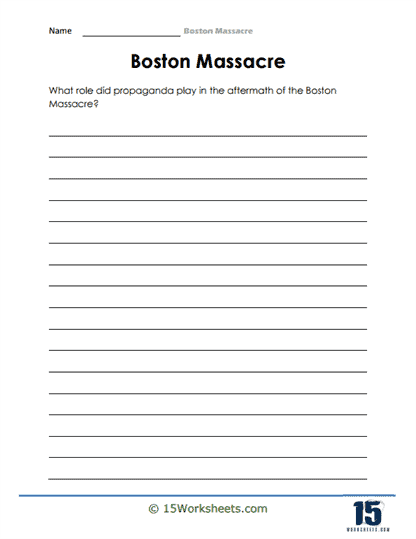Boston Massacre Propaganda

Worksheet Description
This worksheet centers on the Boston Massacre, specifically focusing on the influence of propaganda following the event. It prompts students with a singular, open-ended question: “What role did propaganda play in the aftermath of the Boston Massacre?” The design is straightforward, allocating ample space beneath the question for students to pen a detailed response. A minimalist header displaying the title “Boston Massacre” grounds the theme of the worksheet.
To effectively tackle the question, students should commence by understanding the definition and nature of propaganda. Next, they would delve into historical sources, either from textbooks or reputable online materials, to uncover the various propagandist efforts that emerged after the Boston Massacre. Students should identify key figures, such as Paul Revere, and their contributions to the propagation of a specific narrative about the event. Drawing connections between these propagandist actions and the rising anti-British sentiment would be vital for a well-rounded answer.
The main educational intent of this worksheet is to highlight the significance of propaganda in shaping public opinion and steering historical events. By asking students to reflect on the aftermath of the Boston Massacre, the activity underscores how information can be manipulated or presented in certain ways to evoke particular responses from the populace. The worksheet also nudges students towards critical thinking, pushing them to discern between factual accounts and biased interpretations. Ultimately, this exercise aims to instill in students an awareness of the power of narrative and the importance of scrutinizing sources in historical study.
